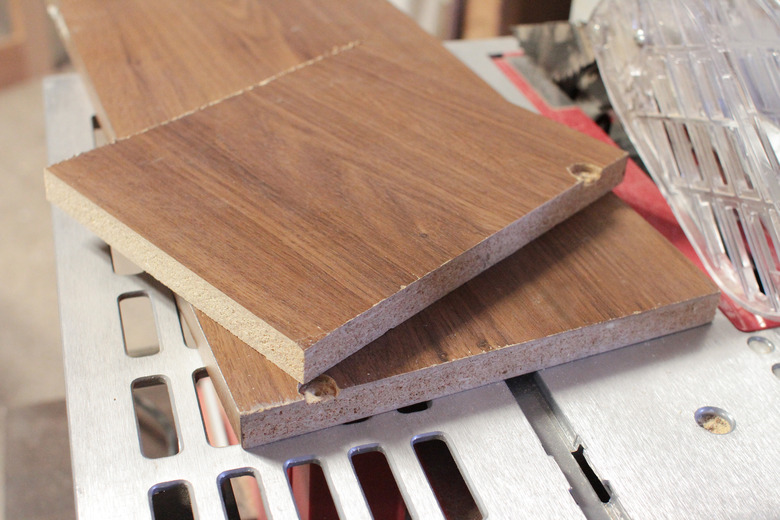How To Cut MDF
We may receive a commission on purchases made from links.
Medium-density fiberboard (MDF) is an inexpensive alternative to plywood that is finding its way into more and more interior building projects, including cabinets, trim, and shelving, so it's important for DIYers to know how to cut it and work with it. In its raw form, MDF comes in 4 x 8-foot sheets like plywood, and you may also find it preformed into trim and molding pieces. Either way, you have to cut it before you can make anything with it, and there's a right way and a wrong way to do that.
If you cut MDF the wrong way, it will chip and shatter, leaving you with rough edges that are almost impossible to fix. Cutting it the right way isn't any more difficult than doing it the wrong way, but you need to use the right saw blade and take a few extra precautions.
The Right Saw Blade
The Right Saw Blade
You can cut MDF with any saw that cuts wood, including a circular saw, table saw, miter saw, and jigsaw, but you can't cut it by hand without making a chipped-out mess. The secret to a clean cut is a saw blade with a high number of cutting teeth. For circular, table, and miter saws, that means a blade with 60 or more teeth (the more the better), and the teeth should be carbide-tipped. Steel teeth aren't sharp enough and wear out quickly when cutting dense materials, like MDF.
When using a jigsaw to cut curves, the best blade is a bimetal one. It's harder than even carbon steel and will last 10 times as long. Use a blade with a minimum of 10 teeth per inch (TPI), but for best results, choose one with 14 or more TPI. It may take longer to make cuts with a high-TPI blade, but it's worth the extra time to get a clean edge.
Making Straight Cuts
Making Straight Cuts
MDF is considerably denser than wood or plywood, so the saw has to work harder when cutting it, and that increases the likelihood of wandering, which results in an uneven cut. To prevent this, always use a guide. The fence on a table saw is a great guide when making rip cuts, but if you're doing the cutting freehand with a circular saw, clamp a straightedge along the cut line to guide the blade.
Another good practice to observe when making straight cuts in MDF is to set the depth of the blade to slightly more than the thickness of the material you're cutting. This decreases the angle of the teeth relative to the surface and prevents chipping. Don't hurry the cut to avoid burn marks. If you do notice burnt edges after cutting at a slow speed, it's probably time to replace the blade. Wear a dust mask and goggles while cutting because MDF produces lots of dust, and because it's filled with chemicals, it isn't something you want to breathe.
Curved Cuts and Shaped Edges
Curved Cuts and Shaped Edges
When cutting curves in MDF using a jigsaw, it's important to clamp the piece you're cutting to a work surface because no matter what kind of blade you use, chip-outs are likely if the piece vibrates while you're working. Work slowly to prevent burnt edges. If you want to guarantee a flawless edge, lay tape over the cut line and cut through the tape. Another way to produce a clean edge on the front of the sheet is to cut from the back.
You can shape MDF edges with a router just as you shape wood edges, and the procedure is virtually the same because the high-speed rotation of the bit helps prevent chip-out. Clamp securely to a work table before using a handheld router or use a router table. You'll need the dust mask more than ever when routing because of the huge amount of dust produced.
